|
MAIN PAGE
APPEARANCES
GEORGE'S PICS
GEORGE'S BIO
PRESS ROOM
GEORGE'S STORE
CONTACT GEORGE

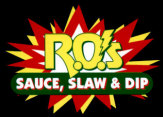
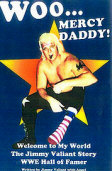
Check out Jimmy Valiant's
hot new book!
Woo...Mercy Daddy!www.JimmyValiant.com
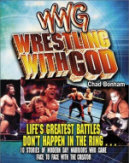
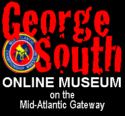

|
|

PRESS ROOM - YES! Weekly
DECEMBER 14, 2005
YES! Weekly
Greensboro NC
Article by Jordan Green, Most Photos provided by
the Mid-Atlantic Gateway
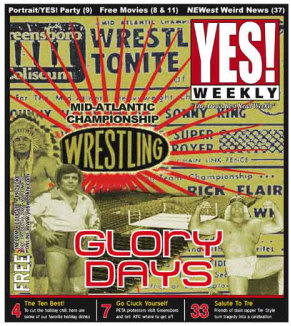
I was famous for getting beat up’:
The glorious and tragic story of Carolina
wrasslin
by Jordan Green
George South was trouble at 18 years of age,
full of meanness. He walked around like he was invincible during his
teenage years when his oldest brother was raising him. He attributes the
posture of invincibility to the fact that his parents were killed in a
car accident when he was 6.
He idolized the legends of Mid-Atlantic Championship Wrestling, men like
Paul Jones and Ed ‘Wahoo’ McDaniel. Wrestling was the one thing that
kept him straight.
The year was 1980. He’d run across an item in the local newspaper in his
hometown of Gastonia. It read: “Become a professional wrestler.”
“There was a little school,” South remembers. “It was a ring in a
rundown building. The door creaked like in ‘Scooby Doo.’ There was a
little old woman in there, and a little old man. There was a six
hundred-pound Samoan and a midget. They beat the crap out of me. The old
lady was whaling on me and the Samoan just about crushed me. I was
laying on the mat and pulling myself up to leave. I thought I might get
a little sympathy from this midget, but he rared back and kicked me as
hard as he could in the ribs. Then he kind of scampered away giggling. I
crawled back to the car and I thought I never wanted to hear about
wrestling again.
“I went back the next day and they threw me in the ring,” he adds. “For
the first five years I got beat up. If you survived you came back.”
Now 43, George South runs a wrestling school in Concord. He wrestles
occasionally for Carolina Championship Wrestling and the Carolina
Wrestling Association, two independent promotions. He runs his own
promotion, Exodus Wrestling Alliance, of which he is the reigning
champion. His son, George Jr., is also making waves in regional
wrestling circles. George Sr. has five children whose ages range from 6
to 20. He uses his wrestling promotion to testify for Jesus.
“I run about three shows a week,” says South, who lives with his wife
and three youngest children on the outskirts of Concord in a house where
remote-control race cars, children’s shoes and wrestling memorabilia vie
for space. “One night a week we go to church. Other nights we train.
Then we got this madhouse here.”
When South got into the business 25 years ago North Carolina wrestling
was ascendant. Jim Crockett Promotions, based in Charlotte, was one of
dozens of promoters in a network of cooperating fiefdoms organized under
the umbrella of the National Wrestling Alliance. Jim Crockett’s
territory, covering Virginia and the Carolinas, produced world champions
and some of the most legendary wrestling personalities of all time: Paul
Jones, Ric ‘Nature Boy’ Flair, Ed ‘Wahoo’ McDaniel, Ricky Steamboat and
Johnny Valentine, to name a few.
Many of the wrestlers lived in Charlotte, where they recorded their
promotional spots and picked up their paychecks. But Greensboro is where
they drew the biggest audiences.
By the time South entered the ring, Greensboro’s place in wrestling
history had been secure for five years, after a Texan named Terry Funk
defeated more than a dozen contenders for the US heavyweight title on
Nov. 9, 1975 at the Greensboro Coliseum. Two weeks later, on
Thanksgiving Day, the top contender Paul Jones snatched the title from
Funk at a rematch at the same venue. The title had been vacated four
months earlier when a plane crash in Wilmington ended the career of
Johnny Valentine, Mid-Atlantic’s top performer, and temporarily halted
the climb of rising star Ric Flair.
In November 1983 Jim Crockett Promotions launched the annual Starrcade
series at the Greensboro Coliseum to allow Flair to take the world
heavyweight title from St. Louis wrestler Harley Race. The event drew
more than 15,000 fans and set an attendance record for the coliseum.
In 1988 George South would wrestle Flair, by then a five-time US
heavyweight champion. South was considered ‘enhancement talent.’ His job
was to make stars look good.
“Other guys wanted to go out there and squash their opponents,” Flair
writes in his 2004 autobiography,To Be the Man. “I didn’t believe in
that. I just wanted the match to be exciting, whether I was wrestling
Ronnie Garvin or bottom-card guys like George South.”
South is quoted in the book as saying: “I was famous for getting beat
up. I’d lose in the World Wrestling Federation (now Vince McMahon’s
World Wrestling Entertainment) on Monday, in Mid-Atlantic on Wednesday,
in Alabama the day after that, and in Florida on the weekend. I got beat
so much that I could have put advertising on the bottom of my boots.”
He adds: “If I was working on a TV taping with Ric Flair in the main
event, I knew I was making a house payment that week. Ric always treated
me right.”
Many of the TV events were taped in Atlanta for Turner Broadcasting
System (now owned by Time-Warner), but Charlotte and Greensboro were
also flashpoints of grappling action.
“Everybody wanted to come here,” South says. “I’d wrestle the same guy
in Charlotte and then in Greensboro. When I started I rode up to
Greensboro many times with these old guys.”
Today, as he shows off a converted garage whose every surface is covered
with wrestling memorabilia, South wears a white T-shirt with the image
of Paul Jones superimposed over the Mid-Atlantic Championship Wrestling
on the front. The back of the shirt bears a representation of the
promotional poster for the 1975 Thanksgiving Day spectacular at the
Greensboro Coliseum, the one where Paul Jones pulled a reversal to rob
Terry Funk of the US heavyweight title and Jack Brisco defended the
world heavyweight title against Wahoo McDaniel.
“They promoted out of the back of a restaurant in Charlotte,” says Dick
Bourne, speaking of the brothers Jimmy and David Crockett, who inherited
the promotion from their father, Jim Crockett Sr. The elder Crockett was
a promoter and restaurateur who established the territory in Charlotte
in 1935.
Bourne grew up in eastern Tennessee in the seventies watching televised
Mid-Atlantic matches broadcast out of Greenville, SC. He and David
Chappell, a lawyer in Richmond, Va., launched the Mid-Atlantic Gateway
website in 2000 to document the Mid-Atlantic wrestling era.
In the early ’70s, Bourne says, the Crocketts started presenting their
premier talent in Greensboro.
“I think it was just the size of the coliseum,” he says. “Greensboro was
where major sporting events took place. There were really three main
cities: Richmond, Charlotte and Greensboro. Seventy percent of the title
changes took place in Greensboro.”
Bourne ranks Greensboro with New York, Dallas and Atlanta as centers for
wrestling in the ’70s and ’80s.
Fans of classic North Carolina wrestling such as South and Bourne speak
reverently of two wrestling events at the Greensboro Coliseum in
November 1975. The Mid-Atlantic Gateway website commemorates the 30th
anniversary of those matches with a special page on the website.
“The month of November 1975 proved without a doubt that the territory
was not only going to survive after the Wilmington plane crash,”
Chappell writes in an account, “but that Mid-Atlantic Wrestling was
going to thrive.”
The Nov. 9 match broke attendance records for the Greensboro Coliseum,
which would be broken yet again in 1983, according to Chappell.
“There were sixteen thousand people in the coliseum and sixteen people
who couldn’t get in,” South remembers. “We’re driving up Interstate 85
and we can’t get into Greensboro because the traffic is backed up. We’re
saying it must have been a bad accident, but it was all people going to
see wrasslin’.”
The second seminal moment for Greensboro wrestling took place on Nov.
24, 1983, when Jim Crockett Promotions established Starrcade. The event
would be held in the Gate City until 1986.
“Starrcade was a huge deal in ’83,” Bourne says. “The world title
changed hands for the first time here. That was on closed circuit TV,
and it worked. It was on in Georgia and Florida, and even down in Puerto
Rico, and it again established Greensboro as one of the big cities for
wrestling. They would satellite transmit the event to another building,
and set up a big screen. This was before cable and home satellite. It
was before Pay-Per-View. It was a way for a lot of people to see an
event.”
For fans, Ric Flair’s 1983 triumph in Greensboro was probably more
significant than reigning World Wrestling Entertainment champ John
Cena’s championship match against JBL in Los Angeles last April. Jim
Crockett Promotions belonged to a territorial system that held more
jurisdiction than the WWE does today.
“The alliance of promoters that was the National Wrestling Alliance —
that included New Zealand, Japan and Mexico — they all recognized one
champion,” Bourne says. “The champion would come to each territory and
defend the title. He would come in and elevate a local wrestler.”
Yet by the time Starrcade ’83 took place, the seeds of the National
Wrestling Alliance and Jim Crockett Promotions’ destruction had already
been planted.
Vince McMahon’s WWE in Connecticut was beginning to branch out of the
Northeast and secure television contracts outside of its territory,
Harley Race states in the Flair autobiography To Be The Man. And like
McMahon, Jimmy Crockett also harbored national ambitions.
McMahon raised the stakes in 1985 by presenting Wrestlemania at Madison
Square Garden in New York, Flair writes. Liberace danced with the
Rockettes in the center ring. Cyndi Lauper had a woman wrestler named
Wendi Richter in a match. The card featured Hulk Hogan and Mr. T, among
others, and was the first show to be broadcast on Pay-Per-View TV. It
was seen all across North America.
“Starrcade was a great concept, but this went even further,” Flair
writes.
To further his own ambitions Jimmy Crockett merged his company with Ted
Turner’s World Championship Wrestling in Georgia. Crockett then took
over territories in St. Louis and Florida. The company had outgrown the
Carolinas and was headed for eventual oblivion in an incremental
corporate showdown with McMahon’s WWE.
“Starrcade was pulled out and moved to Chicago in 1987,” Bourne says.
“For their national image and for advertising revenue they needed to
break the stereotype of a little Southern company. Greensboro was no
longer really special for Crockett. The fans knew it. Attendance
dropped. For people that grew up in this area it was a very sad deal.”
According to Flair’s book and numerous other accounts, Turner purchased
Jim Crockett Promotions in 1988, creating in its wake World Championship
Wrestling in Atlanta. Turner Broadcasting System, in turn, was acquired
by Time-Warner in 1996. Flair writes that as the communications giant
planned its merger with AOL in 2001, it was anxious to shed its
unprofitable wrestling property. McMahon bought it.
Flair, who has recently been in the public eye because of a nasty
divorce and a road-rage incident, currently holds the WWE’s
‘Intercontinental Champion’ title. Even though he works for a company
based in Connecticut, the ‘Nature Boy’ continues to make his home in
Charlotte.
“There is really just an entertainment company now,” Bourne says. “They
call their title the world title, but it’s only really United States.
Japan has their own world champion for their company. It’s no longer a
cooperative approach.”
South puts it like this: “Vince McMahon up north basically bought
everything up. It’d be like one guy coming in and buying all the
newspapers in the country so you just had one big newspaper.”
The consolidation of the wrestling industry has drained much of its
color and personality, in Bourne’s opinion. He notes that during the
heyday of Mid-Atlantic Championship Wrestling, Greensboro would host 18
to 20 wrestling events; in contrast, the Greensboro Coliseum has booked
two WWE shows for 2006, booking manager George Scott says.
“Triple H, Kurt Angle and even Ric Flair today have been at the same
spot on television for three or four years and it gets a little stale,”
Bourne says. “There’s no new angles. There’s nowhere else for wrestlers
to learn their craft. [Before] there was no national promotion. All the
promoters worked together and respected each other’s territories. When
your character got stale you could move on to Georgia and Florida, and
those guys could come here.”
South winces when he thinks about his kids watching WWE wrestling on TV.
It’s the parade of half-naked women, the fact that the good guys often
curse so much you can’t tell them from the villains. It’s the lack of
care taken in creating believable storylines, like how a wrestler will
get run over by a car one day and be back in the ring the next. It’s the
stunts like blowing up the ring instead of focusing on good wrestling.
He points to wrestlers like Gorgeous George, a grappler who got started
in the ’50s, as exemplars of a lost art.
“He had this golden hair,” he says. “He was ahead of his time. People
wanted to come boo him. He’d say all those hard-working farmers were
dirty, so he’d have his male valet spray perfume in the ring before he’d
step in it. He’d go to every beauty parlor in town to have his hair
done, and invite the press to come along. By the time he got to the
Greensboro Coliseum we’d want to kill him.
“It don’t matter how tough we are,” he adds. “If we can’t entertain we
don’t have nothing.”
As a teacher South often finds himself frustrated by students who would
rather act tough than put on a good show. They fail to realize the
dramatic value of taking a humiliating beating to set the stage for a
triumphant reversal.
“Why would anyone get in this business and not know what they were
supposed to do?” he asks. “That’s the question of the ages.”
The wrestlers who keep audiences on the edge of their seats know how to
make each other look good, South says. The 44-year-old Brad Armstrong is
one of these. Armstrong is typecast as a good guy — or a babyface, in
wrestling parlance.
“You hit him, he’ll go down on his knee and a teardrop comes out of his
eye, and he’s looking at the audience like, ‘Please help me,’” says
South, who consistently plays the villain, or heel.
South’s finishing move is the claw. In a typical move South tries to
grip Armstrong’s head with a black glove given to him by Blackjack
Mulligan, a Texas wrestler now retired in Florida. Armstrong in turn
grabs his arm to fend him off.
“I’ll let Brad get up to his feet, and the whole crowd jumps to their
feet because they want to see him get loose — he’s balled up his fist —
and then I’ll crank back up,” South says. “Everybody sits down again and
they’re so mad. I’ve got the claw on him and he’s going limp. Then he’ll
slowly regain his strength and he’ll hit me. All of a sudden I’m waving
around like crazy.
“Sometimes, I’ll try to grab him in the ring and he’ll duck, and my hand
will clamp down on the rope,” he adds. “I act like I’m stuck. The ref is
trying to pull me off. That’s what you do to build up.”
As the old wrestling tradition fades, South looks back at the legacy of
his profession with circumspection. While many of his peers have
succumbed to drug abuse and womanizing, South has gravitated towards
religion. He transports a mobile ring on trailer to churches across the
Carolinas.
“A lot of these guys have made more money than you can imagine, but
they’re left with nothing.” South says. “If you’d have told me we’d take
a ring out to the churches when I was first getting started I never
would have believed you. I get ten to fifteen minutes to say what’s
important in the world, and that’s my relationship with the Lord.”
Circumstances have not been kind to many others in the profession.
“If we all OD’d in a motel room it’s like it’s normal, but being a
Christian is considered strange,” South says. “Jake ‘The Snake’ Roberts
said, ‘I’m gonna try to do better,’ and everybody laughed at him and
said he was faking. A lot of us church-going folks dropped the ball. We
should have come out and supported Jake.”
Roberts, a WWE legend, reportedly wrestles independently now and has
struggled with alcohol and drug addiction.
“We’ve had sixty guys die in the last few years, the legends of
wrestling,” South says. “Ninety-five percent of them was drugs, alcohol,
the steroid use. Their hearts just got too big.”
He mentions WWE wrestler Eddie Guerrero, who died on Nov. 13 at the age
of 38. Rip Hawk, who survived into his eighties and died a couple years
ago, according to South. Wahoo McDaniel who died in 2002 at the age of
64.
“It’s a hard, hard business,” South says. “I wish there were a lot of
happy endings and there’s not. Wahoo wrestled fifty years and died alone
in a hospital. Was that happy? Wahoo, on his deathbed, he was so mad
because the promoters that he worked with didn’t call him.”
If it’s true that opportunities for new talent trying to break in have
diminished with the consolidation of the industry, it could also be said
professional wrestling hasn’t provided much of a retirement plan for its
best talent.
“These old wrestlers can’t get a job as a greeter at Wal-Mart, but
they’ve traveled around the world, and met presidents and dictators,”
South says. “I’ve really looked from the outside in. So many of my
friends have died. It’s put a lot of things in perspective for me. You
may not make money, but you go out in that building and you give people
a good show.”
There’s one common thread between the showmen like Gorgeous George, the
exhilarating matches in regional centers like Greensboro and the oiled
machine that is professional wrestling today, as far as George South is
concerned.
“Flair is the last,” he says. “If Flair ever quits he’s the last of the
era.”
To comment on this story, e-mail Jordan Green at
jordan@yesweekly.com
Original link:
http://www.yesweekly.com/main.asp?SectionID=18&SubSectionID=44&ArticleID=834
|








